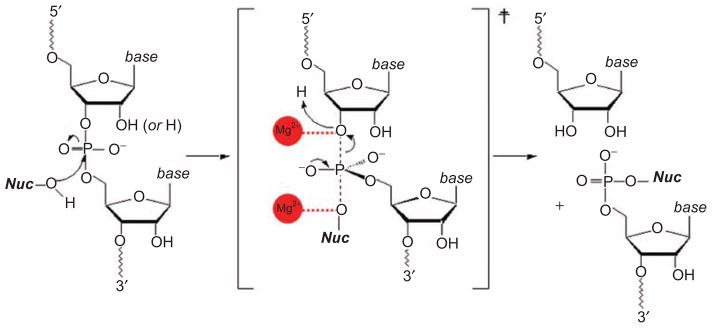Figure 2.

The chemical mechanism of catalysis by group II introns. This is the basic reaction underlying both steps of splicing and the reverse-splicing reactions involved in intron mobility. In this scheme, “Nuc” can represent the 2′-OH group of the branch-site, the 3′-OH group of the 5′-exon or the terminus of the intron, and it can also represent water. Note that the 2′-group on the departing sugar moiety can be a 2′-hydroxyl group (for RNA) or a 2′-hydrogen (for DNA), as the intron can react with either type of substrate. Metal ions are indicated with red balls, and they are in the positions indicated through biochemical work, and implicated by the position of metal ions in the crystal structure, as shown in Figure 11.
